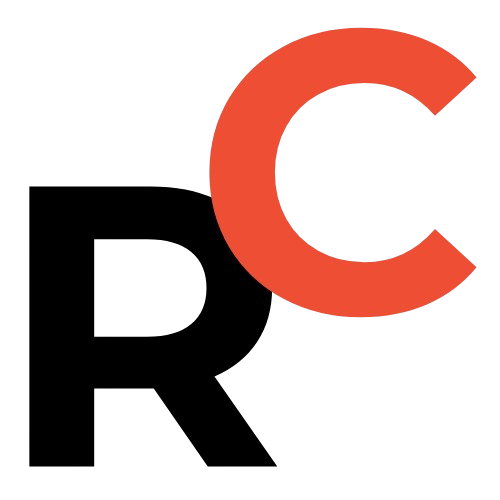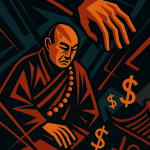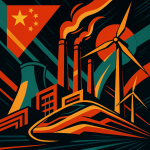Bank-backed online lending rules are now in force and will reshape pricing, partner lists, and borrower protections.
Key Points
- New rules: Banks must operate a whitelist-only regime for assist-loan partners and cap comprehensive financing costs at 24% annualized.
- Platform response: Many platforms (e.g., Ant Group/Mayi 蚂蚁, ByteDance/字节, JD.com/京东, Du Xiaoman/度小满) cut advertised rates to ≤24%, with some trimming rates by about 2 percentage points; field checks found single-loan simple interest as low as 7.56% and approved amounts between ¥60,700–¥200,000.
- Real-cost risks: Guarantee fees, prepayment penalties and other charges can push total annualized costs above 24% (some legacy contracts still show up to 36%, e.g., a reported ¥4,000 loan with a ~36% comprehensive rate).
- Market & whitelist stats: The top five assist-loan platforms account for about 76% of outstanding balances, and some banks published extensive partner lists (WeBank/微众银行 listed 382 partner entities, including marketing, guarantee and collection firms).

Quick summary
China’s new notice on commercial bank internet-assisted lending (the “assist-loan rules“) is now in force.
The rules require banks to publish and maintain a whitelist of approved platform partners and cap comprehensive financing costs at 24% annualized.
Many major internet lending platforms have already reduced their stated annual rates to 24% or below.
But interviews and on‑app tests show some borrowers still face extra fees — guarantee fees, prepayment penalties, and other charges — that can push total annualized costs above 24%.
Field checks found approved single-loan simple interest rates as low as 7.56% on some platforms.

Resume Captain
Your AI Career Toolkit:
- AI Resume Optimization
- Custom Cover Letters
- LinkedIn Profile Boost
- Interview Question Prep
- Salary Negotiation Agent

What the new rules require
The notice, “关于加强商业银行互联网助贷业务管理提升金融服务质效的通知,” requires commercial banks to manage platform operators and credit-enhancement service providers via a published whitelist.
Banks must disclose whitelist entries through official websites, mobile apps and other channels, and update the lists promptly.
Banks are prohibited from cooperating with institutions not on the whitelist — in short, a whitelist-only regime for internet-assisted lending partners.
Crucially, the notice sets a limit on comprehensive financing costs: they must not exceed an annualized 24%.
Before this rule, annualized rates in the 24%–36% band were commonly treated as ordinary private-lending levels; only amounts above 36% were often subject to returning interest via litigation.

Platforms’ frontline response: advertised rates fall to ≤24% but extra fees persist
We reviewed apps and webpages for multiple internet lending platforms under major groups — including Ant Group (Mayi 蚂蚁), Meituan (Meituan 美团), JD.com (Jingdong 京东), Baidu (Baidu 百度), Du Xiaoman (Duxiaoman 度小满), Qifu Technology (Qifu 奇富科技), Paipaidai (Paipaidai 拍拍贷), Mashang Consumer Finance (Mashang 消费金融), and Lexin (Lexin 乐信).
Most had already reduced their prominently displayed maximum loan rates to 24% or below.
Several platforms also launched customer acquisition promotions such as 30-day interest-free offers for new borrowers.
In on‑app tests that required ID entry and face recognition, some platforms quickly approved sample applications.
Approved amounts ranged from ¥60,700 RMB ($8,323 USD) to ¥200,000 RMB ($27,397 USD).
The lowest simple (single-period) interest rate observed was 7.56%, and annualized rates shown for these approvals were below the 24% ceiling.

Find Top Talent on China's Leading Networks
- Post Across China's Job Sites from $299 / role, or
- Hire Our Recruiting Pros from $799 / role
- Qualified Candidate Bundles
- Lower Hiring Costs by 80%+
- Expert Team Since 2014
Your First Job Post

Fees and contract terms that raise the real cost
Although platforms showed lower loan APRs, some did not clearly display upfront whether additional charges (guarantee fees, service fees, or prepayment penalties) were required.
Phone agents from Mashang Consumer Finance and Du Xiaoman told our reporter their platforms do not charge guarantee fees beyond the app-disclosed interest, but other borrowers reported different experiences.
Du Xiaoman provided two example repayment plans for a loan principal of ¥80,000 RMB ($10,959 USD): a revolving (draw-and-repay, unlimited-due-date) plan with an annual rate of 13.032% and a fixed-term plan (3/6/12 months) with an annual rate of 11.952%.
The fixed-term plan carried a clause: if the borrower repays early, a penalty equal to 4% of the outstanding principal is charged.
Three days later, the same Du Xiaoman contact offered to raise the loan principal to ¥100,000 RMB ($13,699 USD) and reduce the annual rates to 11.052% (revolving) and 9.972% (fixed-term).
If either loan is taken for 12 months, they equate roughly to per-¥1,000-per-day interest of ¥0.30 and ¥0.27 respectively.

ExpatInvest China
Grow Your RMB in China:
- Invest Your RMB Locally
- Buy & Sell Online in CN¥
- No Lock-In Periods
- English Service & Data
- Start with Only ¥1,000

Borrower cases: advertised rates vs. realized comprehensive cost
Many borrowers have filed complaints online saying their existing contracts still carry comprehensive annualized costs above 24% and have asked platforms to lower those rates.
The complaints indicate platforms did not always proactively adjust legacy contracts.
One borrower from Hainan — Wang Yu (pseudonym) — borrowed about ¥4,000 RMB ($548 USD) through Fenqile (a consumer installment app).
The contract listed a nominal annual interest rate of 6.8%, with the financing party identified as Yilian Bank (Yilian 银联银行).
But the loan’s stated comprehensive annualized cost was 36%, with a guarantee fee of a little over ¥400 RMB ($55 USD) paid to a Shenzhen-based financing-guarantee company.
After the new rules were announced, Wang repeatedly contacted the platform asking that the portion of interest falling in the 24%–36% range be waived; he said the platform did not provide a substantive response.

Legal view: courts distinguish reasonable financing costs from excessive fees
Lawyers note the Supreme Court’s judicial interpretation allows borrowers to request that financing costs above an annualized 24% be reduced if a court finds that interest, compound interest, penalties, and other fees together are significantly disconnected from the lender’s actual losses.
But courts evaluate the total annualized cost and will not automatically treat all financing fees as unreasonable.
Judges will separate legitimately reasonable financing fees from parts that should be reduced.

Bank whitelists: disclosure uneven; WeBank’s partner list is large
Not all banks have published their assist-loan whitelists.
Several major state-owned banks had not publicly disclosed lists at the time of checks.
Among banks that have published lists, large internet platforms and licensed consumer-finance firms appeared frequently: Ant Group (Mayi 蚂蚁), Douyin (Douyin 抖音), Meituan (Meituan 美团), JD.com (Jingdong 京东), Du Xiaoman (Duxiaoman 度小满) and others.
Some private banks and property-and-casualty insurers also appear often, such as WeBank (Weizhong 微众银行) and MyBank (Wangshang 网商银行).
According to the tally, at least six joint-stock banks, six city-commercial banks, four rural-commercial banks, 13 private banks and five foreign banks had released whitelist information.
WeBank’s published partner list was extensive — 382 partner entities, including 18 marketing/acquisition agents, 44 guarantee/credit-enhancement bodies and 320 collection agencies.
Notably, WeBank’s partners did not necessarily include the largest internet giants; its partners included a wide range of technology and financial service providers such as Taiping Financial (Taiping 金融), Huawei (Huawei 华为) and Kingdee (Jindie 金蝶).
A foreign bank, Fubon Huayi Bank (Fubon 华一银行), listed 52 assist-loan partners including both large platforms and some less-expected names such as HelloPay (Haluo Puhui 哈啰普惠), Weibo (Weibo 微博), Dewu (Dewu 得物) and Vipshop (Weipinhui 唯品会).

Industry structure and market concentration
According to an iResearch (Airi 艾瑞咨询) 2025 report, in 2024 five leading internet assist-loan platforms — Ant Group (Mayi 蚂蚁), ByteDance (Zimeiti 字节), JD.com (Jingdong 京东), Du Xiaoman (Duxiaoman 度小满) and Meituan (Meituan 美团) — accounted for about 76% of industry outstanding assist-loan balances.
The report divides the market by outstanding loan balance:
- Tier 1 ( > ¥300 billion RMB / > $41.1 billion USD): comprehensive internet platforms such as Ant Group, ByteDance and JD.com.
- Tier 2 (¥150 billion–¥300 billion RMB / $20.55–$41.1 billion USD): flow platforms with embedded financial scenarios, including Du Xiaoman, Meituan Finance and Lexin (Lexin 乐信).
- Tier 3 (¥50 billion–¥150 billion RMB / $6.85–$20.55 billion USD): leading independent fintech platforms such as Qifu Technology (Qifu 奇富科技), Xinye Technology (Xinye 信也科技), Jiayin Technology (Jiayin 嘉银科技) and Xiaoying Technology (Xiaoying 小赢科技).
In the assist-loan value chain, internet platforms generally function as customer-acquisition and risk-management enablers.
Banks, trust companies and consumer-finance firms provide funding.
Guarantee companies and insurers provide credit enhancement.
Credit bureaus, data providers, technology vendors and collection agencies provide supporting services.
Analysts say the sector has moved past the “wild growth” phase.
Concentration of traffic, data and scenarios in the hands of a few large platforms means future competition will center on risk-pricing capability, fintech strength and finely tuned customer operations.

Experts: compliance and risk-pricing must be priorities
Experts warn that institutions heavily dependent on assist-loan business face significant short-term adjustment pressure.
The new regime turns compliance and risk management into central competitive dimensions.
Financial institutions must update internal rules and provider agreements, ensure headquarters-level central management, maintain transparent fee disclosures, and consistently apply independent risk controls.

What borrowers should watch
- Check the platform’s publicly disclosed whitelist and the lending bank’s disclosure.
- Read contracts carefully for guarantee fees, servicing fees and prepayment penalties, and ask platforms for a full breakdown of the comprehensive annualized financing cost.
- If your existing contract shows a total annualized cost higher than 24%, you may seek explanation from the platform and, if necessary, legal advice — courts may reduce unreasonable fees above the 24% marker, but they will distinguish reasonable financing costs from excessive charges.
Investor & founder playbook — short tactical takeaways
If you build or invest in fintech that relies on assist-loan flows, prioritize three areas immediately.
- Compliance-first product rewrites: make fee disclosure and whitelist proof visible in-app and on the checkout flow.
- Pricing transparency: model scenarios including guarantee fees, early-repayment penalties and servicing charges so actual APR stays within the 24% comprehensive cap.
- Legacy contract triage: inventory existing loans with comprehensive rates in the 24%–36% band and build legal/PR playbooks for consumer disputes.
Linking opportunities
Internal link suggestions:
- Pages on compliance and regulatory updates for Chinese fintech.
- Product pages explaining loan pricing, APR calculations, and borrower rights.
- Guides on contract review and legal recourse for loan disputes.
External link suggestions:
- Regulator notices such as the China Banking and Insurance Regulatory Commission announcement.
- Bank/WeBank partner lists and platform help pages for whitelist confirmation.
- iResearch (Airi 艾瑞咨询) coverage of the assist-loan market.
Bottom line
The new bank-backed online lending rules force clearer partner control through whitelists and cap comprehensive financing costs at 24% annualized.
Advertised rates are trending down and single-loan simple interest can be as low as 7.56% in field checks.
But legacy contracts, opaque extra fees, and uneven whitelist disclosure mean operational and legal risks persist.
Investors and founders should focus on transparent pricing, strong compliance, and tight risk-pricing to compete under the new rules.
Bank-backed online lending rules will be a defining regulatory pivot for the assist-loan market — watch whitelist disclosures, fee breakdowns, and how banks and platforms reprice risk.

References
- 助贷新规落地调查:单利最低达7.56%,有网贷平台主动降2个点利率“拉客” – 时代周报
- 助贷新规落地调查:单利最低达7.56%,有网贷平台主动降2个点利率“拉客” – 东方财富
- 关于加强商业银行互联网助贷业务管理提升金融服务质效的通知 – 中国银保监会
![China Signals US Talks Openness, Berkshire's Big Shift & Key Global Market Moves [FreshFromChina]](https://freshfromchina.com/wp-content/uploads/2025/05/China_Signals_US_Talks_Openness__Berkshire_s_Big_Shift___Key_Global_Market_Moves____FreshFromChina-150x150.png)

![China's Auto Price War Heats Up: Deep Discounts & New Launches Target May Day Shoppers [FreshFromChina]](https://freshfromchina.com/wp-content/uploads/2025/05/Chinas-Auto-Price-War-Heats-Up-Deep-Discounts-New-Launches-Target-May-Day-Shoppers-FreshFromChina-150x150.png)


